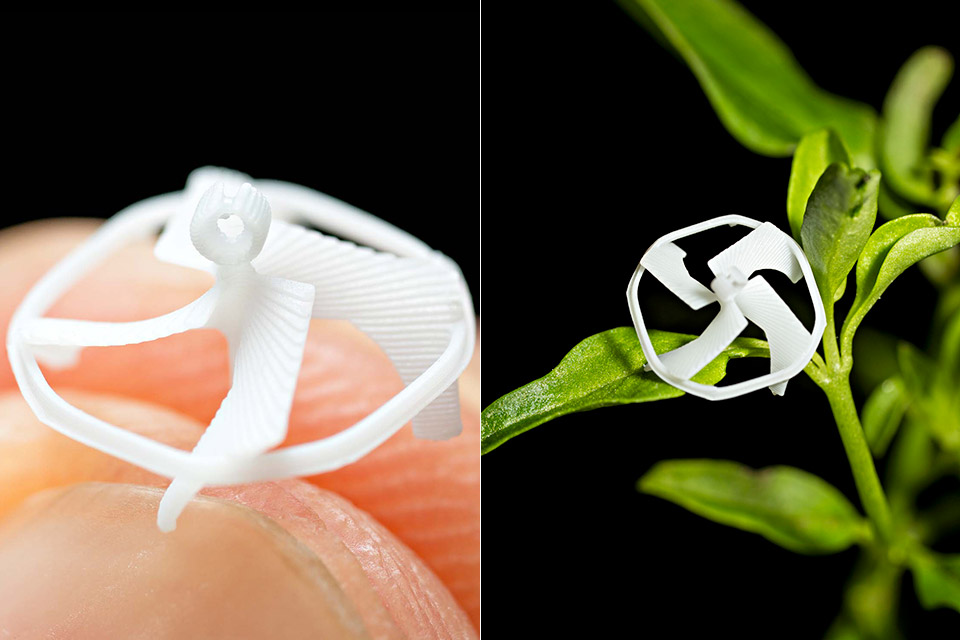World’s Smallest Untethered Flying Robot is No Larger Than Your Fingertip


Photo credit: Adam Lau/Berkeley Engineering
UC Berkley engineers have developed the world’s smallest untethered flying robot, which is inspired by the bumblebee, and measures less than 1 centimeter in diameter. Put simply, this 21mg marvel is small enough to fit between your fingertips.
Unlike traditional drones, it doesn’t carry a battery or onboard power source, which keeps it incredibly lightweight. Instead, this micro flying machine is powered and controlled by an external magnetic field, complete with a small propeller-like structure sporting two tiny magnets. How does it fly? Its magnets spin when they encounter an external magnetic field and then generate enough lift to get the robot off the ground. Once it becomes airborne, its balance ring adds rotational inertia, resulting in a stability-boosting gyroscopic effect.

DJI Neo, Mini Drone with 4K UHD Camera for Adults, 135g Self Flying Drone that Follows You, Palm Takeoff,…
- Lightweight and Regulation Friendly – At just 135g, DJI Neo may be even lighter than your phone and does not require FAA registration and Remote ID….
- Palm Takeoff & Landing, Go Controller-Free [1] – Neo takes off from your hand with just a push of a button. Neo’s safe and easy operation makes it…
- Subject Tracking & QuickShots – Effortlessly capture stunning vlogs as DJI Neo smartly follows you. Getting professional footage has never been easier…

Batteries, even the smallest ones, are too heavy for something this size to fly efficiently, so the Berkeley team sidestepped that problem by using wireless energy from the magnetic field. This makes it ideal for navigating tight or complex spaces—like small cavities or cluttered environments—where larger drones can’t go.

Right now, it’s capable of what’s called “passive flight,” meaning it lacks onboard sensors to detect its position or adjust its path in real time. A sudden gust of wind could knock it off course. Still, its potential is exciting—think applications in search-and-rescue missions, environmental monitoring, or even pollination assistance.

Bees exhibit remarkable aeronautical abilities, such as navigation, hovering and pollination, that artificial flying robots of similar scale fail to do. This flying robot can be wirelessly controlled to approach and hit a designated target, mimicking the mechanism of pollination as a bee collects nectar and flies away,” said Liwei Lin, Distinguished Professor of Mechanical Engineering at UC Berkeley.
[Source]
World’s Smallest Untethered Flying Robot is No Larger Than Your Fingertip
#Worlds #Smallest #Untethered #Flying #Robot #Larger #Fingertip








